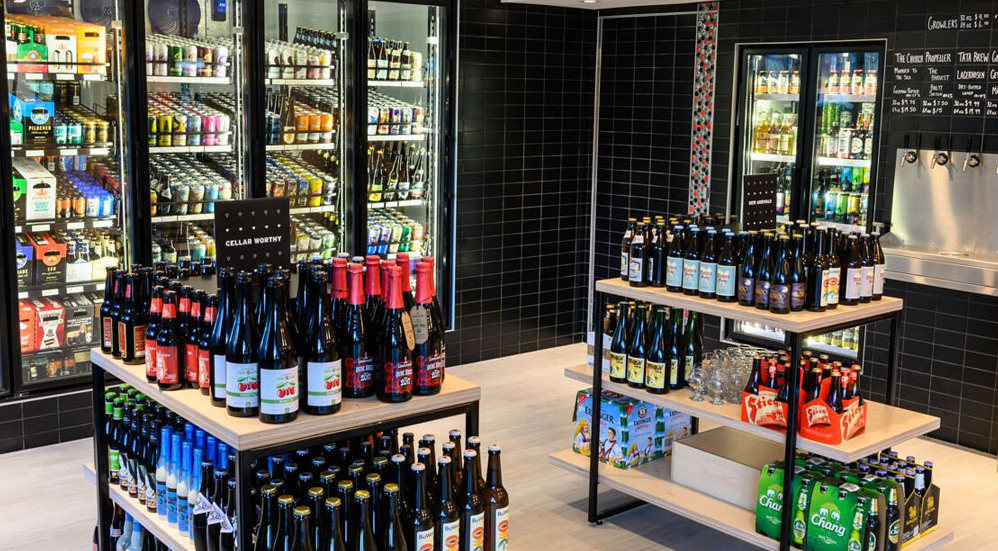Any fermented foods, or beverages are susceptible to unwanted bacteria and yeasts that contribute off-flavours, aromas, and textures. Beer is no exception, and beer faults can happen at several different stages of production and storage. Most faults in beer are not wanted, although there are some outliers that in small amounts are accepted.
Here are some common faults, I’ll break these down into a few different categories.
Never accepted:
–Luckstruck or skunked is when beer is exposed to UV light. When blue light reacts with the hop bittering compounds they create mercaptans (skunky smell) in just a few seconds if the beer is in clear glass. Green glass slows this process to maybe 5 minutes. In contrast, brown glass is around 98% protective. Cans are the best method of packaging to protect against UV rays and skunky beer. Kegged beer is also protected, but of course, that changes quickly if the pint is consumed outdoors on a sunny day.
-Acetaldehyde is a fault that when smelled once, it’s hard to forget. A beer with this fault will smell like freshly cut green apples. Most brewer’s yeasts actually produce acetaldehyde during fermentation, but in a healthy and proper fermentation, the yeast will eventually eat up all remaining acetaldehyde and turn it into alcohol. So, if you smell fresh green apples it may mean the brewer rushed the beer too fast to packaging or the yeast wasn’t healthy enough to finish the job.
Sometimes accepted (in small amounts):
-Diacetyl can come across in aromas of butter or buttered popcorn, and the texture can create an almost slick mouthfeel. Yeast creates Diacetyl as fermentation rolls along, but a healthy yeast and good brewing practices will reabsorb the compound and it won’t be noticeable in the finished beer. It can be so strong that it’s often added to food products like popcorn to make it taste more buttery. It is sometime accepted in small amounts in British ales, but should never be a dominating component in any style.
–DMS, or Dimethyl Sulfide is a natural sulfuric compound found in a wide range of food and drink. In beer, DMS comes from the grain and can show up during the boiling process. It has the aromas of creamed corn, cooked cabbage, and, in dark beers, can show as aromas of tomato juice. In the brewhouse, it can show up in the finished beer if not purged properly or if the wort isn’t chilled and put into the fermenter quickly. DMS at lower levels is acceptable in lighter, lager styles and can even contribute pleasant aspects.
On purpose:
–Brettanomyces, or Brett for short, is a naturally occurring yeast that historically was found in wooden barrels, but is also found naturally in the air. It is a slow fermenting yeast that, if the brewer wanted, could ferment a beer entirely without using ale or lager yeasts. Brett yeasts produce aromas and flavours that are described as horse blanket, leather, earthy, and musty. Some strains can even produce fruity aromas. If the brewer didn’t intend to make a beer with Brett, but Brett was present – it would be a fault, a sign of bad fermentation and sanitary processes.
That said, most brewers use it intentionally. It can be the primary fermenting yeast or the secondary yeast, if added in the bottle to condition, or if the beer was re-fermented in a cask or in the tank. This is a yeast you will see a lot in the craft brewing scene, as it has the potential to open up an entire mosaic of aromas and flavours not accessible by common brewing yeasts.
One misconception is that Brett beers are sour – not the case, sourness is caused by lactic acid. Read below!
–Lactobacillus/Pediococcus are two different bacteria within the lactic acid family. Lactic acids are found in a plethora of foods and drinks and they create acidity and tartness. Much like Brettanomyces, if the brewer didn’t intend to make a sour beer, the presence of lactic acid bacteria a fault and the sign of an infected beer. When done intentionally, the bacteria can be added directly to beer, and much like yeast, the bacteria feeds on the sugars. Instead of producing alcohol, they turn the sugars into lactic acid! There are a few historical beer styles that require acidity. Common styles are the German Berliner Weisse, Belgian Lambic, German Gose, Flanders Red, and Oud Bruin that all utilize various forms of acidifying bacteria.

